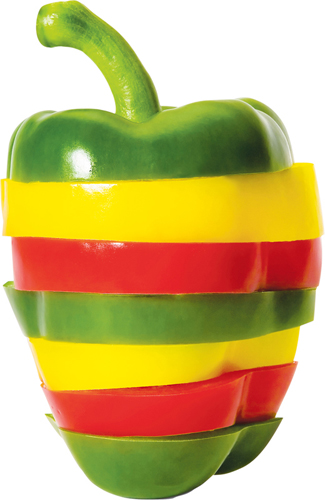Segmenting the Market
Every market segmentation strategy in South America must consider the extreme differences of wealth and poverty, urban and rural areas, and values of the young and old. However, the most successful approaches combine segmentation criteria to understand and meet consumer needs.
Socioeconomic segments
Income distribution in South America is among the most unequal in the world, with a huge gap between rich and poor. The small wealthy class has enormous buying power and pays lavishly to get what it wants, giving excellent margins to retailers. However, this market is saturated and competitive. The new opportunities are coming from the middle class. This prime market was undersized and underserved, but the numbers are growing. Enjoying new prosperity, the middle class is driving consumption in the region. Ignored until recently, the lower-income sector is an attractive market because of its huge numbers. With no access to consumer credit, companies offering the poor monthly payment plans can attract loyal buyers.
Demographic segments
While income differences are critical, other market demographics should not be neglected. Gender differences are pronounced: women do the household shopping while men make major purchases. As more women enter the workforce, they are sharing in and making more decisions. Age is another important factor. In most countries of the region, almost half of the population is under 18 and less than 10 percent is over 65. Capturing the youth market can be profitable in the short and long term. Their lifestyles and values are not traditional. Retired parents may move in with their children and grandchildren. The “sandwich generation” spends to indulge both their children and their parents.
Geographic segments
In a region where getting products to customers may be challenging, distribution channels are a priority for market segmentation. Each country in South America usually has one huge metropolis. Easy access to millions make this segment the first choice for distribution. The next phase of growth is still focused on urban areas, but requires moving away from the metropolises. Second-tier cities may be hard to reach, but unmet demand and affordable real estate are good reasons to make the effort. Many rural consumers have some disposable income, but may not have basics like electricity, cars, and plumbing.

Lifestyle segments
Simple demographic segmentation is no longer adequate to explain the increasingly wealthy South American market. Combining different segmentation criteria can help companies tap into the hugely diverse market. Most lifestyle classifications of the region’s consumers use a combination of socioeconomic class with values. For example, some lifestyle segments identified in Chile include socially active as opposed to home-focused, and economically aspirational against successful and fulfilled. Traditional and modern are also important lifestyle segments. Other ways of segmenting markets might be environmental priorities, peer or family focus, international views, health and fitness, or hobbies. Socioeconomic stratification of the metropolises used to be enough to reach a lucrative market. Today market segmentation must combine approaches for increasingly sophisticated consumers.

Income distribution
Socioeconomic classes in South America are assigned letters to differentiate them from each other. The official census department of each country decides how to determine the classification, but it is usually some combination of income, education level, and possessions owned such as a car, vacuum cleaner, and number of televisions. The table below explains some possible market segments.
| A | B | C | D | |
|---|---|---|---|---|
| Lifestyle | Luxury | Comfortable | Have the basics | Struggling |
| Typical professions | Doctors, attorneys, engineers, executives | Managers, health care workers, small entrepreneurs | Laborers, office workers, employees at minimum wage | Day laborers with jobs such as cleaning, repairing |
| Typical level of ownership | Beach house, luxury car, designer clothes | Own home, car, appliances, some luxuries | Rent home, have basic necessities, use public transportation | Lack many basics like good shelter, warm clothing |
| Consumer behavior | Seek status, comfort, leisure | Seek good quality, buy some brands | Price sensitive, buy brands on occasions | Buy small quantities near home |
| Share of wealth | The A classes control about half the wealth of South America | Relatively small number of people with moderate wealth | Large number of people with enough to meet basic needs | D and E classes are 20–40% of the population, with just 10% of the wealth |
| Notes | Lucrative and demanding, saturated with luxury brands | Lifestyle similar to that of the middle class in US or Europe | This is the fastest growing segment | Living on a few dollars a day |
Banking for the poor
With no credit history and little collateral, low-income consumers in South America usually have no access to financial services. Banco Azteca successfully entered Peru by extending a business model they developed for Mexico—targeting lower-income consumers, applying technology for efficiency, and building personal relationships for customer loyalty. Loan officers from Banco Azteca develop relationships with their clients, visiting their homes for a personal assessment to decide a reasonable loan amount. They return to clients’ homes regularly to receive loan payments and may offer complementary products like life insurance and savings accounts. Home visits in congested neighborhoods are facilitated by sophisticated GPS systems, scheduling software, and company scooters.
TIP
High inflation, informal employment, and economic disturbances make “stock” measures, or what is owned, more reliable than “flow” measures, or what is earned.
TIP
Household income may be a more useful measure than individual income, since living with an extended family is common and increases a person’s purchasing power.
